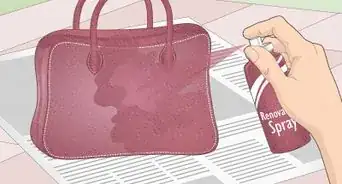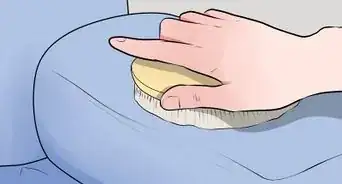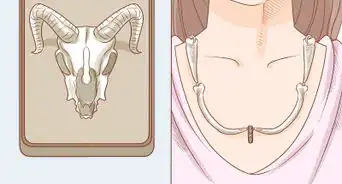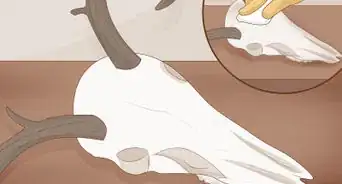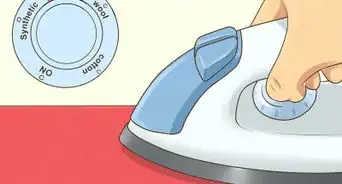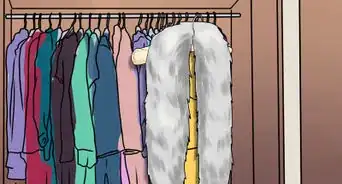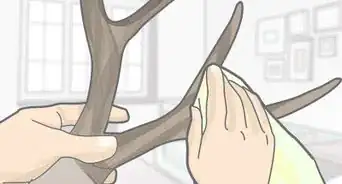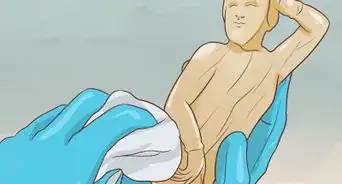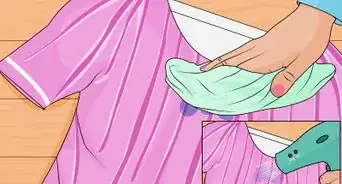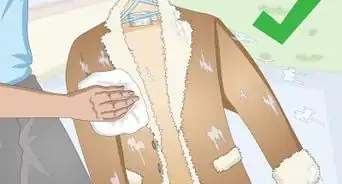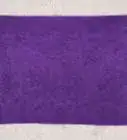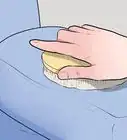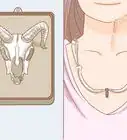This article was co-authored by wikiHow staff writer, Amber Crain. Amber Crain has been a member of wikiHow’s writing staff for the last six years. She graduated from the University of Houston where she majored in Classical Studies and minored in Painting. Before coming to wikiHow, she worked in a variety of industries including marketing, education, and music journalism. She's been a radio DJ for 10+ years and currently DJs a biweekly music program on the award-winning internet radio station DKFM. Her work at wikiHow supports her lifelong passion for learning and her belief that knowledge belongs to anyone who desires to seek it.
wikiHow marks an article as reader-approved once it receives enough positive feedback. This article received 14 testimonials and 94% of readers who voted found it helpful, earning it our reader-approved status.
This article has been viewed 246,329 times.
Learn more...
Whether you’re a collector or using them in crafts, it’s important to wash any feathers that you pick up outdoors. Mothballs will kill possible parasites. Sanitize feathers with an alcohol and hydrogen peroxide solution. To remove dirt and grit from the feathers, swish them gently through a mild soap solution. Use a blow dryer on its lowest setting to dry them completely or allow them to air dry.
Steps
Sanitizing Feathers
-
1Kill parasites with mothballs before bringing feathers inside. If you picked up your feathers outside, they may be carrying parasites. Place a handful of mothballs in a zip-lock baggie or Tupperware container. Add your feathers and seal the container. Keep the container outside and give the mothballs at least 24 hours to kill any possible parasites on the feathers.[1]
- To be effective, make sure you use mothballs that list paradichlorobenzene as an ingredient.
-
2Use rubbing alcohol and hydrogen peroxide to kill bacteria. Bird feathers may be carrying bacteria and viruses. Once you’ve taken care of possible mites, the feathers need to be sanitized to kill bacteria. Create a mixture that is half rubbing alcohol and half hydrogen peroxide. Soak the feathers in this solution for at least half an hour.[2]
- The higher the concentration of peroxide and alcohol, the better.
Advertisement -
3Use boiling water to sanitize quills. If the quills look dirty or have a foreign substance on them, they should be sanitized. Bring a shallow pot of water to a boil on your stove. Place the quills into the water. Hold them there for a few minutes, which will kill any germs present.
- Lay them out flat on paper towels to dry.
- If boiling loosened up any unidentifiable gunk on the quills, wipe them gently with a soft cloth to remove it.
Using Soap and Water
-
1Create a cleaning solution with warm water and mild soap.[3] Fill a bucket, tub or sink with warm water. Squeeze a small amount of mild dish detergent (like Dawn) or mild laundry detergent (like Woolite) into the bucket. Use your hand or a spoon to agitate the water and mix the ingredients together.
-
2Swish the feathers through the solution. Add your feathers to the bucket of solution and gently swish them through the water. Avoid any kind of scrubbing, which will damage the feathers. Continue to swish until the feathers appear clean.[4]
-
3Rinse the feathers in clean water. Fill a new bucket with clean water. Take the feathers out of the cleaning solution, one at a time, and swish them gently through the clean water to rinse away the soap residue. If you’re rinsing a lot of feathers, you may need to dump the bucket and refill it with fresh water once or twice.[5]
-
4Use a blow dryer on the low setting to dry the feathers. Once rinsed, place the clean feathers out flat on paper towels. Set a regular hair dryer to its lowest setting. Pick up one or two of the feathers at a time. Hold them by the quills and gently blow air on them until they are completely dry.[6]
- Don’t hold the feather right up to the blow dryer’s stream. Hold them a few inches back so you won’t warp their natural shape.
Community Q&A
-
QuestionWhat percentage of hydrogen peroxide do I need?
 Community AnswerIt doesn't really matter, as long as it's for medical use, it should be fine. Just make sure it's for medical use and not lab use, as the latter has a much higher percentage.
Community AnswerIt doesn't really matter, as long as it's for medical use, it should be fine. Just make sure it's for medical use and not lab use, as the latter has a much higher percentage. -
QuestionWhat are some parasites that ducks carry?
 Community AnswerDucks usually carry mites and lice. Mites are kinda like spiders as they are eight legged and kind of jump, lice are itchy and like to hop into other fabric or hair.
Community AnswerDucks usually carry mites and lice. Mites are kinda like spiders as they are eight legged and kind of jump, lice are itchy and like to hop into other fabric or hair. -
QuestionDo I have to use mothballs if I use the peroxide and rubbing alcohol for a long time and then wash the feather with soap and water?
 Community AnswerProbably not, as most things can't survive in alcohol and peroxide for long. However, I would leave the feather in the solution for longer to be certain.
Community AnswerProbably not, as most things can't survive in alcohol and peroxide for long. However, I would leave the feather in the solution for longer to be certain.
References
- ↑ https://daragallery.wordpress.com/2013/07/22/sanitizing-feathers-for-crafts/
- ↑ https://daragallery.wordpress.com/2013/07/22/sanitizing-feathers-for-crafts/
- ↑ http://fashionista.com/2016/12/how-to-clean-sequins-fur-feathers
- ↑ http://fashionista.com/2016/12/how-to-clean-sequins-fur-feathers
- ↑ http://fashionista.com/2016/12/how-to-clean-sequins-fur-feathers
- ↑ http://fashionista.com/2016/12/how-to-clean-sequins-fur-feathers
About This Article
If you find an interesting feather outside, it’s important to sanitize it and remove possible parasites. Put a handful of mothballs in a zip-top bag, then place the feather in the bag and seal it. Leave the feather in the bag for at least 24 hours. Next, take the feather out of the bag and soak it in a mixture of equal parts rubbing alcohol and hydrogen peroxide for at least half an hour. This will kill bacteria and viruses on the feather. You can also kill germs and loosen stubborn grime by putting the feather in boiling water for a few minutes. Lay it out on a paper towel to dry when you’re done. To learn how to dry your feather with a hairdryer, keep reading!
